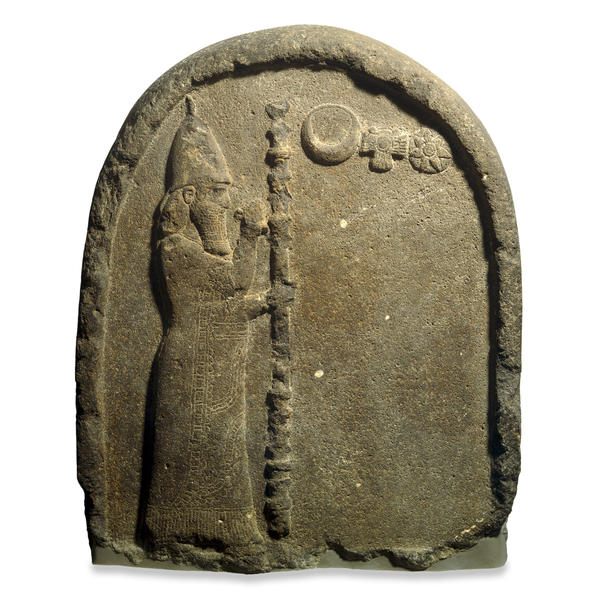Last week, we discussed the first two days of creation as depicting the beginning of time and space. The separation of light from darkness (Day One) and the waters above from waters below (Day Two) is followed on Day Three by a third act of separation:
God said, “Let the waters under the sky come together into one place so that the dry land can appear.” And that’s what happened (Gen 1:9, CEB).
The land emerges from the water: picture a flat disc of land floating on the waters below, with the waters above held back by the dome.

Of, course, this is not our world view! We know that, just as the sky is not a solid bowl overhead, the earth is not a disk floating on the waters below, but a sphere, drifting through empty space.
Still, Genesis 1:9 presents a commonsensical worldview. I know there is water up there, beyond the sky, because sometimes it comes down, as rain. I know there is water down there, under the earth, because sometimes it bubbles up, in springs and streams, and if I dig at the right place, I may hit it!
Day Three involves two distinct acts of creation. After calling forth the dry land from the waters, God empowers the emerging world to take part in its own coming into being:
God said, “Let the earth grow plant life: plants yielding seeds and fruit trees bearing fruit with seeds inside it, each according to its kind throughout the earth.” And that’s what happened (Gen 1:11).
God invites the earth to participate in its own creation, by putting forth (literally, sprouting) green plants. Further, the plants themselves, each bearing “fruit with seeds inside it,” hold within them the possibility of continuing God’s creation, carrying life forward into the future. God creates a world capable of continuous regeneration.
Just as a consonance can be observed between God’s creation of space-time and contemporary physics, surely we can see here a consonance between God empowering the world to bring forth life and contemporary biology.
Biologists strive to understand the emergence and development of life in naturalistic terms, just as an engineer designing a dam or an astronomer calculating the orbit of a planet strives to make predictions based on observable, natural laws. Genesis 1:11 is not biology. Israel’s ancient priests knew nothing of DNA or mitochondria or the evolution of species. Their description of creation proceeds from their idea of God, not from investigation into the world’s workings. However, their insight that God empowers God’s world for self-creation, and invites its participation in its own coming into being, lends support to the biologist’s quest for understanding.
With the separation of land from water and the emergence of the plants, we might say that geography comes into being. Three days into creation, we have a world that we can recognize: sky overhead, seas, lakes, rivers, forests, savannas, deserts, mountains, plains. But though this is recognizably the place where we live, we do not live there yet. In fact, no one lives there! It is still empty. But in the next three days, God populates this world–beginning with its empty sky.
In the ordered priestly conception of Genesis 1:1—2:4a, each of the second three days in sequence is parallel to one of the first three days, in sequence. So, while on Day One God created light (Hebrew ‘or), on Day Four (first of the second three days, paralleling day one; cf. Gen 1:14-19), God creates the me’orot: that is, the lights. A big light now rules the sky at day, while a little light and a generous scattering of tiny lights adorn the heavens at night. The previously blank dome of the heavens is now “populated” with lights.
From our twenty-first century scientific and technological perspective, this makes no sense at all! We know that we live on a ball spinning in space. When our side of the ball turns toward the sun, we experience what seems to us to be the sunrise. As the ball turns, we experience what seems from our perspective to be the sun moving across the sky. When our side of the ball moves into the shadow on the far side, so that we face away from the sun, we experience night.
How, then, could three days have gone by, and the sun come into being only now, on the fourth day? The simple answer is that, while we know the reasons for night and day, the people who wrote this text did not. From their perspective, light and darkness, day and night, were direct creations of the Divine. The sun, the moon, and the stars were lights, fixed to the dome of the sky. Their motion marked the passage of the days and nights and the sequence of the seasons (see Gen 1:14), but they did not cause them.
By contrast, in the Babylonian creation story, the Enuma elish, the sun and moon are gods, and the constellations are the astral images of the gods. The Babylonians invented astrology based on this idea. If you understand the motion of the heavens, you know what the gods are doing, and can plan your own life accordingly.

But Genesis 1:14-19 simply calls the heavenly bodies “lights.” They are objects, not persons! For the priests in Genesis 1, the sun is not a god, the moon is not a god, the stars are not gods and goddesses; all are merely lights in the sky. By concentrating divinity solely in God, Genesis 1 disenchants the world. The storm, the earthquake, fire, and fertility are not gods and goddesses, but natural forces. Objects in the world are simply objects.
In many ways, we do not, and cannot, share the worldview of this text. Our earth is not a flat disk; our sky is not a solid dome; we know that the sun, moon, and stars are not lights fastened to the sky. The disenchantment of the world described in Genesis 1:14-19, however, makes our scientific and technological world possible.
 As long as I believe in an enchanted world, a world haunted by gods and demons in which every rock, stone or tree is possessed by a spirit, I can neither formulate laws to render the behavior of my world meaningful, nor make predictions based on those laws. The interaction of objects in the world will be due to the capricious decisions that those various spirits might make in their interactions with one another.
As long as I believe in an enchanted world, a world haunted by gods and demons in which every rock, stone or tree is possessed by a spirit, I can neither formulate laws to render the behavior of my world meaningful, nor make predictions based on those laws. The interaction of objects in the world will be due to the capricious decisions that those various spirits might make in their interactions with one another.
But once I understand that the sun is an object, like a lamp; that the moon and the stars too are lights—in short, once my world is disenchanted—I can attempt to understand the interrelationships among the objects in the world. By observation and experiment, I can begin to formulate hypotheses and test them; I can make predictions about what my world will do. The ancient Israelite priests who wrote Genesis 1 were not scientists, but the step that they took in Genesis 1:14-19 makes science happen.


